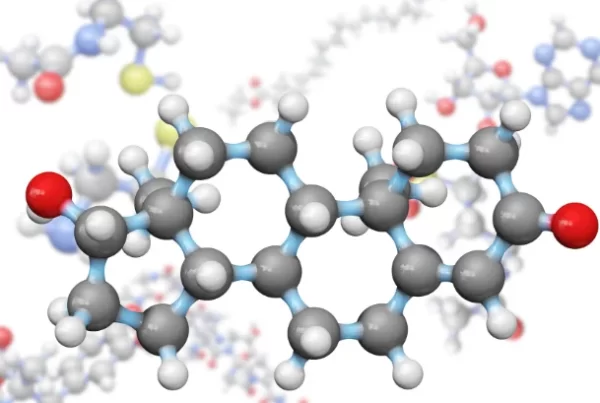If you’re overweight, you know that losing weight can be a balancing act. It’s hard to fight against the normal tendencies of human nature while trying to make lifestyle changes that have long-term, positive impacts on your health. On top of it all, there is the constant reminder from society – in the form of food noise and chatter – telling us what we need to do but not necessarily how we need to get there. But what if I told you that new research has shown promising results using GLP-1 therapy as an effective way for reducing those food cravings and unwanted thoughts? In this post, we will explore how GLP-1 therapy helps reduce these nagging food noises with research based evidence and understanding.
Understanding Food Noise and Chatter – Explaining what it is and why it’s a problem
Have you ever heard of food noise or food chatter? It may sound strange, but it’s a real phenomenon that affects many people. Essentially, food noise refers to the intrusive and distracting thoughts that arise about food and eating. Whether you’re just trying to get some work done or actively trying to not eat, food noise and chatter can make the task at hand seem impossible. Food chatter, on the other hand, refers to the external noise and distractions that can also be present, such as advertisements for snacks and restaurants, hyper-palatable food displayed in TV shows or hearing about delicious food in conversations around you. While many people may not realize it, these distractions can have a significant impact on our ability to fully appreciate our food and the satisfaction that comes along with it. So if you find yourself struggling with food noise or chatter, it’s important to seek out strategies to minimize these distractions and start living in the moment.
GLP-1 Therapy – How it works to reduce food noise and chatter
Are you tired of constantly feeling hungry or having the desire to snack constantly on your mind? GLP-1 therapy might just be the solution you need to block out the noise. This groundbreaking treatment specifically targets the hormones in your body and brain that are responsible for regulating hunger and satiety – via the GLP-1 receptor. By targeting these hormonal pathways, GLP-1 therapy helps to reduce the noise and chatter in your brain associated with food cravings and hunger pangs. The result? You’ll feel more in control, be able to make healthy choices without feeling constantly distracted by food, and lose weight effortlessly (although effort is never discouraged). It’s no wonder this treatment has quickly become a popular option for those looking to take control of their appetite and achieve a healthier lifestyle, and with these changes patients have been seeing vast improvements in their overall health.
Benefits of GLP-1 Therapy – Weight loss, improved hunger control, reduction in binge eating episodes
For those struggling with weight management, GLP-1 therapy may be a game changer, especially with the release of second and third generation GLP-1 agonists like tirzepatide and retatrutide. Not only do these medications help with weight loss, but they also improve appetite control, reduce binge eating episodes and even reduce alcohol and drug cravings. GLP-1 therapy works by increasing insulin secretion and slowing down the rate at which food is emptied from the stomach, leading to feelings of fullness and satisfaction. However, GLP-1 medications also have a significant impact on areas of the brain (like the nucleus accumbens) that are responsible for cravings and appetitive control of all pleasurable behavior. With improved hunger control (and possibly even self-control), those who undergo GLP-1 therapy can make better choices when it comes to meal planning and snacking. And with fewer binge eating episodes, individuals can break free from the vicious cycle of overeating and guilt. Overall, the benefits of GLP-1 therapy can lead to a healthier, happier lifestyle for those struggling with weight management.
Potential Risks – Side effects and long-term safety concerns
When it comes to any medication or treatment, potential risks are always a concern. Side effects and long-term safety concerns can vary depending on the treatment and individual patient. It’s important for patients to understand the possible risks and to discuss them with their healthcare provider before starting any new medication or treatment. Some common side effects can include nausea, dizziness, or headaches, while long-term safety concerns may involve the development of more serious conditions. While there is always some degree of risk with any treatment, patients can work with their healthcare providers to find the best course of action for their specific needs.
Who Should Consider GLP-1 Therapy – Those with binge eating disorder or obesity who need help controlling their appetite
Binge eating disorder and obesity can be tough for those who struggle with them, especially when it comes to controlling their appetite. Food noise and food chatter are the ever inescapable distraction that keeps you coming back for snacks throughout the day, and the inability to make long lasting changes. The distractions are just too invasive to constantly fend off, and eventually even those with the strongest will power submit. That’s where GLP-1 therapy comes in. This treatment option is ideal for those who need an extra hand in regulating their urges to overeat or snack and those who struggle with weight management. GLP-1 therapy is a proven solution that can help curb hunger and promote a healthier lifestyle through reducing cravings, food noise and impulsivity. If you’re someone who has struggled with these issues, it’s worth considering whether this therapy might be right for you. Consult with your doctor to learn more about how GLP-1 therapy can positively impact your life.
Other Treatment Options for Reducing Food Noise and Chatter – Including lifestyle modifications and medications
For those who struggle with the noisy and overwhelming experience of food chatter, there is hope beyond just avoiding restaurants or crowded dining areas. Along with lifestyle modifications like eating in quieter places and avoiding trigger foods, there are also medications that can aid in reducing the sensory overload. One such medication is tesofensine, which has shown promise in clinical trials for not only suppressing appetite but also reducing impulsivity and improving cognitive function. While it is important to consult with a healthcare provider before trying any medication, tesofensine may be a helpful option for those seeking relief from the constant noise of food chatter.
Other Treatment Options for Reducing Food Noise and Chatter – Including lifestyle modifications and medications
For those who struggle with the noisy and overwhelming experience of food chatter, there is hope beyond just sticking your head down and grinding through the day. There are new medications that effectively reduce these distracting thoughts, freeing you to live in the moment. In addition to the injectable GLP-1 medications, there is an oral medication, called tesofensine, that has been shown to be equally effective. Tesofensine has shown promising results, with an average weight loss of 10% body weight, in clinical trials. Tesofensine not only suppresses appetite but also reduces impulsivity, improves mood and enhances cognitive/memory function. While it is important to consult with a healthcare provider before trying any medication, tesofensine may be a helpful option for those seeking relief from the constant noise of food chatter.







